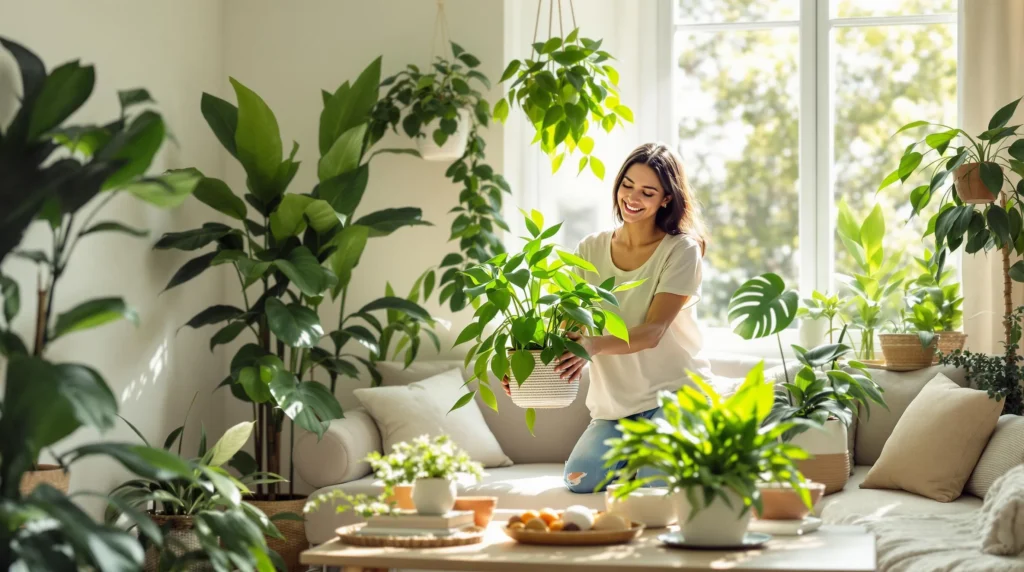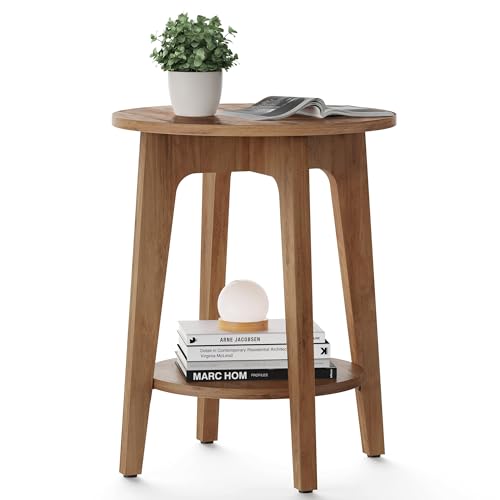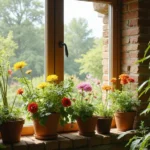Transforming your living space with the right plants isn’t just about aesthetics—it’s about creating a healthier, more vibrant home environment. We’ve researched the best indoor plants that offer both beauty and benefits, from air purification to stress reduction.
Ready to bring the outdoors in? We’ll guide you through our top selections of houseplants that thrive in various conditions, require minimal maintenance, and add a touch of natural elegance to any room. Whether you’re a seasoned plant parent or just starting your green journey, these plant recommendations will help you create your own indoor oasis.
10 Low-Maintenance Plants You Should Have in Your Home
1. Snake Plant (Sansevieria)
Snake plants top our list of low-maintenance indoor plants for good reason. These sturdy plants thrive in almost any light condition, from bright indirect light to low light corners. You’ll only need to water them every 2-3 weeks, making them perfect for busy or forgetful plant parents. Snake plants also excel at purifying indoor air by removing toxins like formaldehyde and benzene while releasing oxygen at night.
2. ZZ Plant (Zamioculcas Zamiifolia)
ZZ plants feature glossy, dark green leaves that instantly elevate your home decor. These drought-tolerant plants store water in their thick rhizomes, allowing them to survive weeks without watering. Thriving in both bright and low light environments, ZZ plants rarely attract pests or develop diseases. Their air-purifying qualities make them both beautiful and functional additions to any room.
3. Pothos (Epipremnum Aureum)
Pothos plants offer versatility with their trailing vines that look stunning in hanging baskets or climbing up trellises. Available in varieties like golden, marble queen, and neon, these adaptable plants grow in most light conditions except direct sunlight. Watering once every 1-2 weeks is sufficient, and propagating them is incredibly easy—simply cut a vine segment and place it in water.
4. Spider Plant (Chlorophytum Comosum)
Spider plants produce arching leaves and tiny plantlets that dangle from long stems, creating a dramatic cascading effect. These fast-growing plants adapt well to various light conditions but prefer bright, indirect light. Watering once a week is typically adequate, and they communicate clearly when thirsty by showing slight drooping. Spider plants also effectively remove formaldehyde from indoor air.
5. Rubber Plant (Ficus Elastica)
Rubber plants feature large, glossy leaves that make a bold statement in any room. These plants can grow quite tall indoors, reaching heights of 6-10 feet when properly cared for. Preferring bright, indirect light, rubber plants need watering only when the top inch of soil feels dry. Their thick leaves efficiently collect dust, which can be easily wiped clean with a damp cloth.
6. Peace Lily (Spathiphyllum)
Peace lilies produce elegant white flowers that stand out against their deep green foliage. These plants thrive in medium to low light conditions, making them ideal for darker corners in your home. Watering once a week typically suffices, and they clearly indicate when they need water by drooping slightly. Peace lilies effectively filter indoor air pollutants like ammonia, benzene, and formaldehyde.
7. Aloe Vera
Aloe vera plants serve both decorative and practical purposes with their distinctive spiky leaves. These succulents store water in their thick leaves, requiring watering only every 2-3 weeks. Preferring bright, indirect light, aloe vera plants produce a gel inside their leaves that can be used to soothe minor burns and skin irritations. They also remove formaldehyde from indoor air.
8. Chinese Evergreen (Aglaonema)
Chinese evergreens boast beautiful patterned leaves in various shades of green, silver, and red. These plants thrive in low to medium light conditions, making them perfect for offices and apartments with limited natural light. Watering every 7-10 days is typically sufficient, allowing the soil to dry slightly between waterings. Chinese evergreens also help filter indoor air pollutants.
9. Cast Iron Plant (Aspidistra Elatior)
Cast iron plants live up to their name with incredible resilience and tolerance for neglect. These plants feature dark green, arching leaves that grow slowly but steadily over time. Thriving in low light conditions, cast iron plants need watering only when the soil feels dry to the touch, typically every 2-3 weeks. Their ability to withstand temperature fluctuations makes them ideal for homes with inconsistent climate control.
10. Jade Plant (Crassula Ovata)
Jade plants feature thick, woody stems and plump, oval-shaped leaves that store water. These succulents symbolize good luck and prosperity in many cultures. Preferring bright light but tolerating medium light conditions, jade plants need watering only when their soil completely dries out, typically every 2-3 weeks. With proper care, jade plants can live for decades, growing into small tree-like structures that become family heirlooms.
Air-Purifying Snake Plants: Nature’s Air Filters
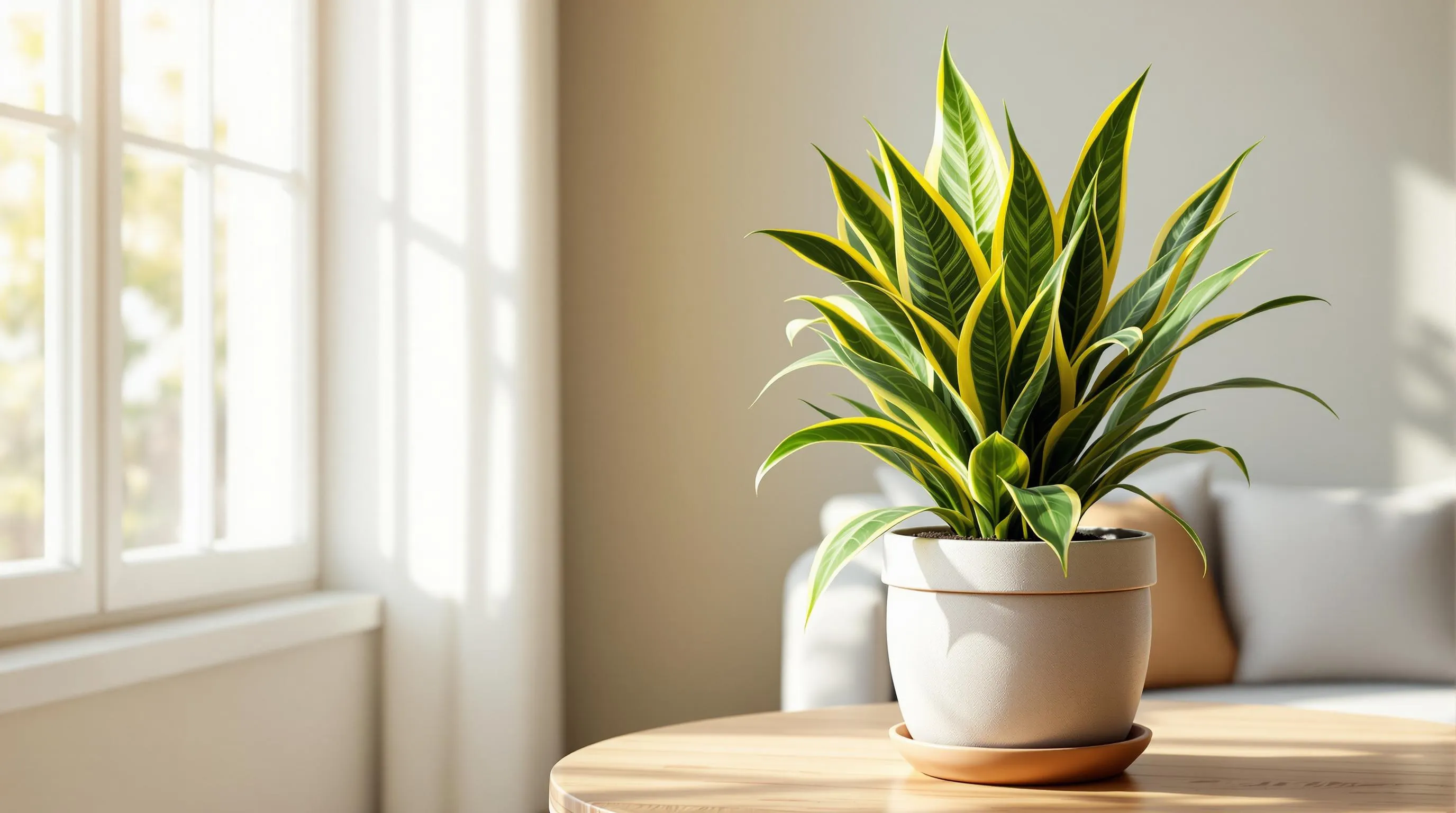
Snake plants (Sansevieria trifasciata) stand out as exceptional natural air filters for your home, efficiently removing harmful indoor pollutants while requiring minimal care. These versatile plants not only add a striking architectural element to your décor but also work tirelessly to improve your indoor air quality day and night.
Benefits of Snake Plants for Indoor Air Quality
Snake plants excel at removing common household toxins such as formaldehyde, benzene, xylene, and toluene through their distinctive upright leaves. These pollutants typically originate from everyday items like adhesives, cleaning products, and synthetic materials found throughout your home. Unlike most plants, snake plants continue to absorb carbon dioxide and release oxygen during nighttime hours, making them particularly beneficial for bedrooms where you spend approximately one-third of your day. Their oxygen production capabilities remain efficient even in low-light conditions, helping maintain fresher air throughout your living spaces. Many homeowners appreciate that one well-placed snake plant can significantly impact air quality in medium-sized rooms without requiring the energy consumption of mechanical air purifiers.
How to Care for Your Snake Plant
Providing proper light conditions means placing your snake plant in low to bright indirect light, though they’ll tolerate almost any lighting situation except direct sunlight, which can scorch their leaves. Watering should be done sparingly, only every 2-6 weeks, as these drought-tolerant plants prefer their soil to dry completely between waterings. Choose a well-draining potting mix for your snake plant to prevent root rot, which is one of the few problems these hardy plants might encounter. Temperature management is straightforward—maintain your home between 60-85°F (15-29°C) and keep these tropical natives away from cold drafts near windows or doors during winter months. For maximum air-purifying benefits, consider pairing your snake plants with other air-cleaning varieties like peace lilies (which target formaldehyde and benzene) or aloe vera (effective against detergents and adhesive residues). Snake plants rarely require repotting, often thriving in the same container for years, making them truly one of the most maintenance-free options for improving your home’s air quality.
Peace Lilies: Elegant Blooms for Any Room
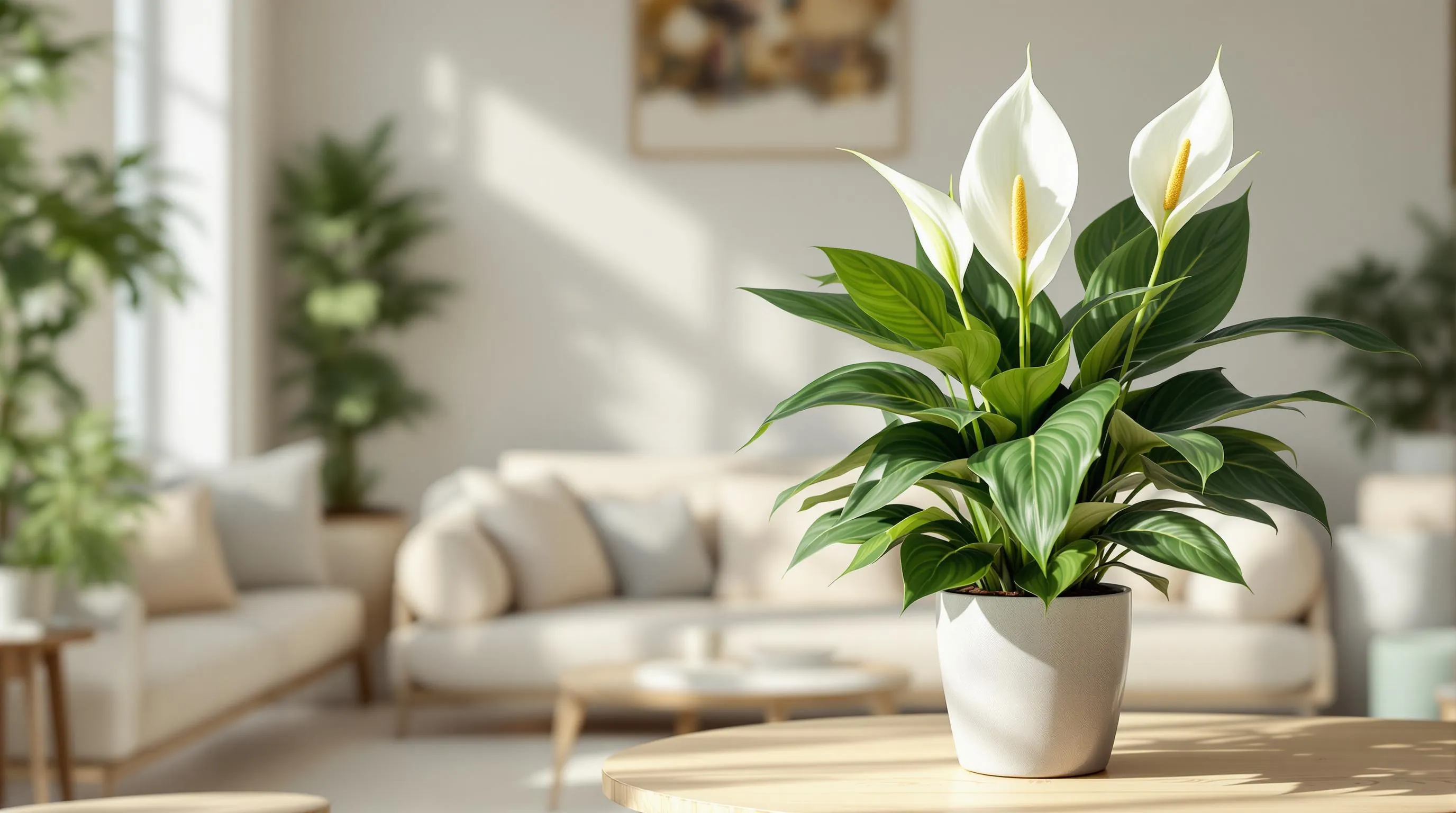
Peace lilies (Spathiphyllum) stand out as exceptional indoor plants that combine beauty with impressive air-purifying qualities. NASA research confirms their ability to absorb airborne toxins, making them as functional as they are attractive. Their striking white blooms and glossy green foliage add an elegant touch to any living space or bedroom.
Why Peace Lilies Thrive in Low Light Conditions
Peace lilies have evolved to flourish under forest canopies in their natural habitat, giving them a unique advantage in indoor environments. Their adaptation allows them to photosynthesize efficiently even in indirect sunlight conditions where other plants might struggle. The broad, dark green leaves of peace lilies are specifically designed to maximize light absorption from minimal sources. This evolutionary advantage makes them perfect candidates for dimly lit corners, north-facing windows, or rooms that receive limited natural light. Many homeowners appreciate their versatility, as these resilient plants maintain their lush appearance even in spaces that would cause other flowering plants to deteriorate.
Watering and Maintenance Tips
Maintaining peace lilies requires minimal effort compared to many flowering houseplants. For watering, aim to keep the soil consistently moist but never soggy. Wait until the top inch of soil feels dry before adding water, as overwatering can lead to root rot. Place your peace lily in bright, indirect light for optimal growth and flowering, though they will tolerate lower light conditions with slightly reduced blooming.
Regular maintenance includes wiping the broad leaves with a damp cloth to remove dust buildup, which ensures efficient photosynthesis and keeps the plant looking its best. Trim any yellowing leaves at the base to maintain the plant’s health and appearance. Peace lilies rarely need repotting and typically thrive in the same container for years with proper care.
These plants communicate their needs clearly—drooping leaves signal it’s time for water, while yellow leaves might indicate too much direct sunlight. Peace lilies prefer normal room temperatures and benefit from occasional misting in dry environments, making them wonderfully adaptive to standard home conditions.
Spider Plants: Perfect for Beginners and Pet Owners
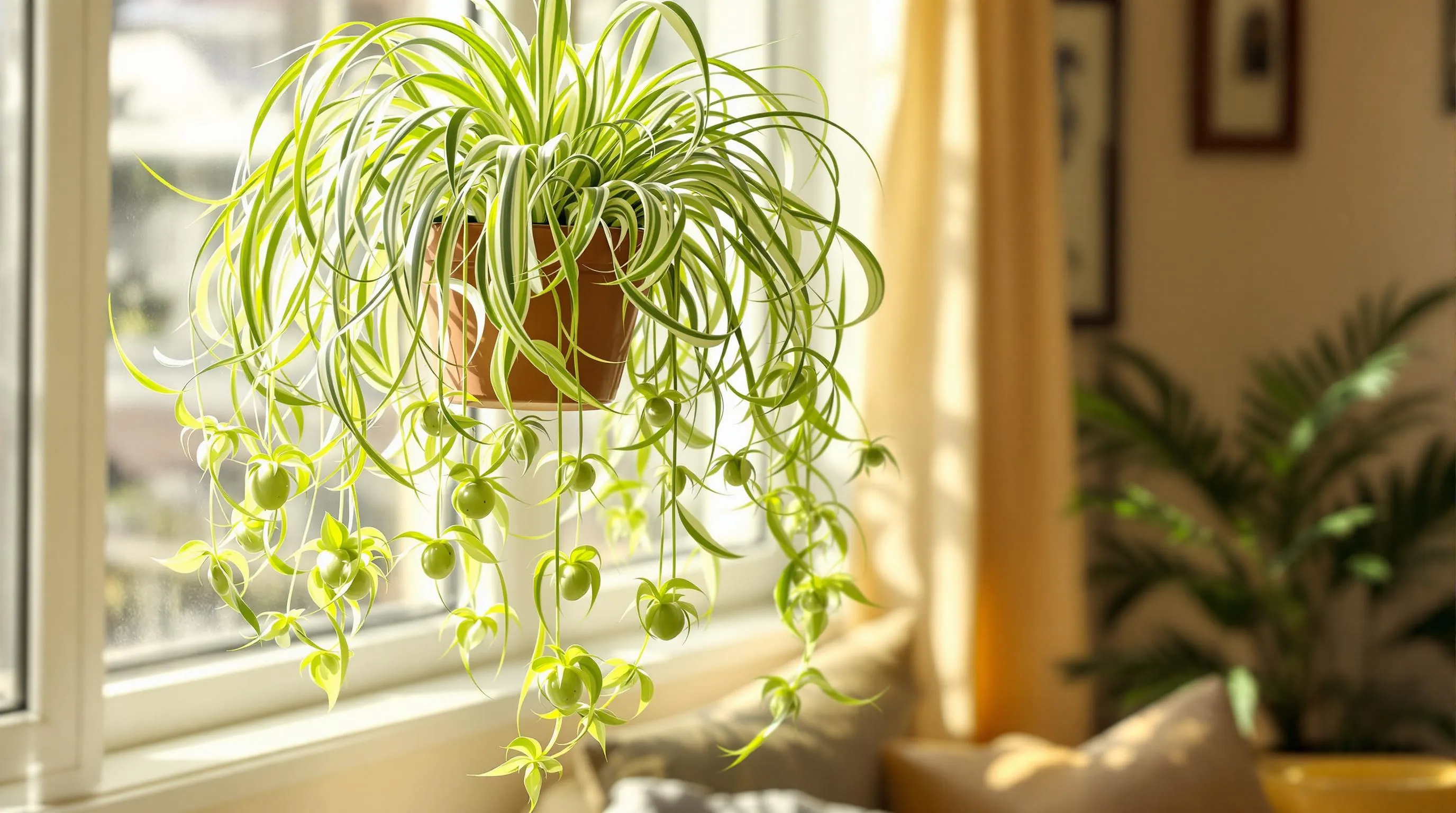
Spider plants (Chlorophytum comosum) stand out as ideal houseplants for beginners due to their low maintenance requirements and rapid growth patterns. These resilient plants thrive in indirect light conditions and can tolerate irregular watering schedules, making them perfect for busy households or those new to plant parenthood.
Spider Plant Propagation Made Easy
Propagating spider plants ranks among the simplest plant reproduction methods available to home gardeners. The plant naturally produces “spiderettes” or baby plants that dangle from long stems, ready for new life. You can easily propagate these offspring by placing them in either water or soil until they develop their own root systems. Water propagation allows you to watch the fascinating root development process before transferring to soil. Many plant enthusiasts find joy in sharing these baby plants with friends and family, creating a community of spider plant owners from just one parent plant.
Pet-Safe and Child-Friendly Benefits
Spider plants offer a important advantage over many houseplants by being completely non-toxic to both pets and children. This safety feature makes them an excellent choice for households with curious cats, dogs, or young children who might be tempted to nibble on leaves. Unlike common houseplants such as philodendrons that pose toxicity risks, spider plants can be placed throughout your home without worry. Their air-purifying qualities work silently in the background, removing indoor pollutants while posing no health risks to your family members—furry or otherwise. The ASPCA officially lists spider plants as non-toxic to animals, giving pet owners peace of mind when incorporating these attractive plants into their indoor décor.
Pothos: The Versatile Trailing Beauty
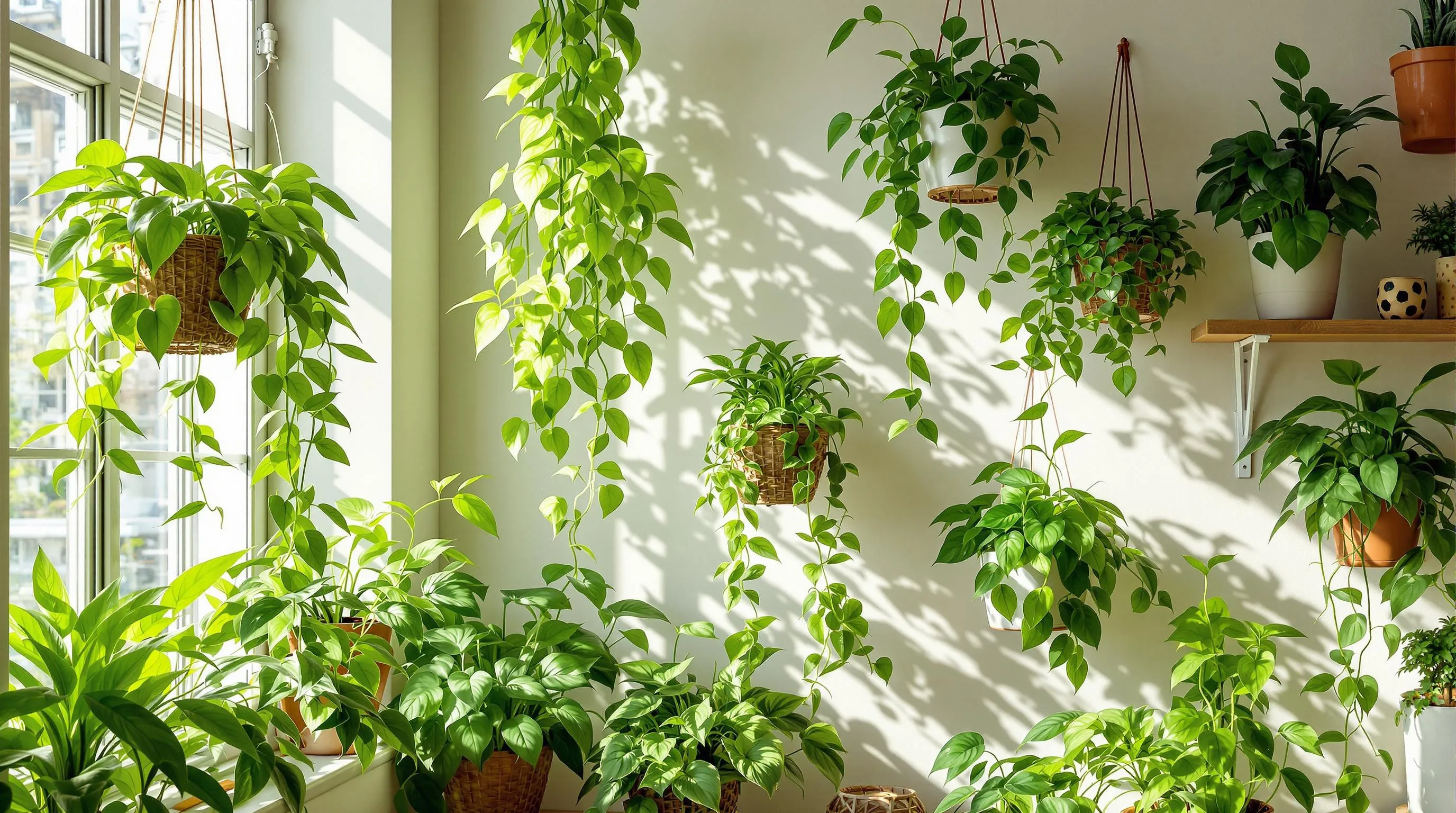
Pothos plants have earned their reputation as one of the most accommodating houseplants available today. These trailing beauties adapt remarkably well to low-light conditions and can forgive irregular watering schedules, making them perfect for busy plant owners or those new to indoor gardening.
Different Pothos Varieties to Consider
The Marble Queen pothos showcases stunning variegated white-and-green leaves that create visual interest in any space. Neon pothos varieties stand out with their bright chartreuse foliage that can add a pop of color to darker corners of your home. Jade pothos features solid green leaves with a glossy texture that reflects light beautifully, bringing a touch of elegance to shelves and tabletops. Each variety maintains the same easy-care requirements while offering distinct aesthetic appeal, allowing you to choose the perfect match for your interior design preferences.
Creative Ways to Display Your Pothos
Hanging baskets provide an ideal way to showcase the cascading vines of pothos plants, creating a dramatic effect as they grow. Wall-mounted planters work wonderfully for pothos, letting their trailing vines create living art along your walls. Shelves offer practical display options where pothos can drape down elegantly while saving floor space. Vertical gardens become possible when you attach pothos to moss poles or trellises, encouraging upward growth and creating a lush green column. Terrariums offer a unique display method, where pothos can be combined with pebbles and smaller plants in glass containers for a miniature network. Macramé hangers placed near windows showcase the beautiful vines while adding a bohemian touch to your décor. Mixing pothos with other trailing plants like philodendron creates appealing layered greenery that transforms any space into a verdant oasis.
Aloe Vera: The Healing Houseplant
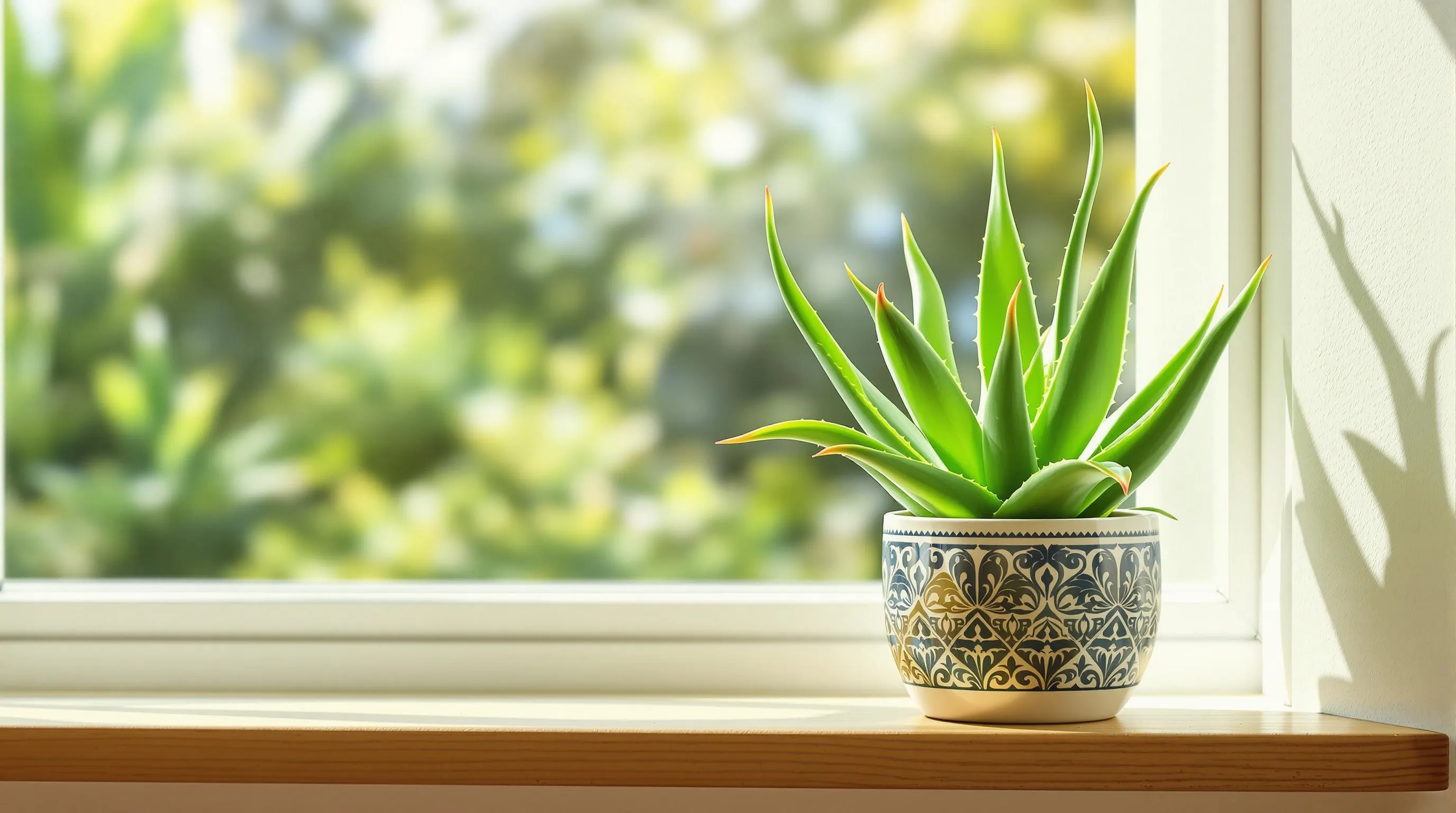
Medicinal Properties and Practical Uses
Aloe vera stands out as a uniquely beneficial houseplant that doubles as a natural medicine cabinet in your home. The gel inside its leaves contains powerful anti-inflammatory compounds that effectively treat burns, cuts, and skin irritations when applied directly to affected areas. Many skincare enthusiasts incorporate fresh aloe vera gel into their daily routines for its exceptional moisturizing properties that leave skin feeling hydrated and refreshed. Beyond skincare benefits, this versatile plant helps purify indoor air by removing harmful toxins, creating a healthier living environment for you and your family. We recommend keeping an aloe plant in your kitchen for quick access to its healing gel whenever minor cooking burns or cuts occur, making it both decorative and practical.
Sunlight and Watering Requirements
Aloe vera thrives in bright, sunny locations throughout your home, making windowsills and well-lit shelves ideal spots for this succulent. Direct sunlight is generally tolerated well, though some indirect light ensures the plant won’t become stressed during intense summer heat. Watering requirements for aloe plants are minimal – allow the soil to completely dry out between waterings to prevent root rot, which is the most common cause of aloe plant failure. A well-draining, high-quality potting mix supports healthy growth and prevents moisture from accumulating around the roots. First-time plant owners will appreciate aloe vera’s forgiving nature, as it can recover from occasional neglect and requires little attention to flourish. Perfect for busy households, this resilient plant thrives in kitchens and living rooms where natural light is abundant, providing both aesthetic appeal and practical benefits with minimal maintenance.
ZZ Plants: Virtually Indestructible Greenery
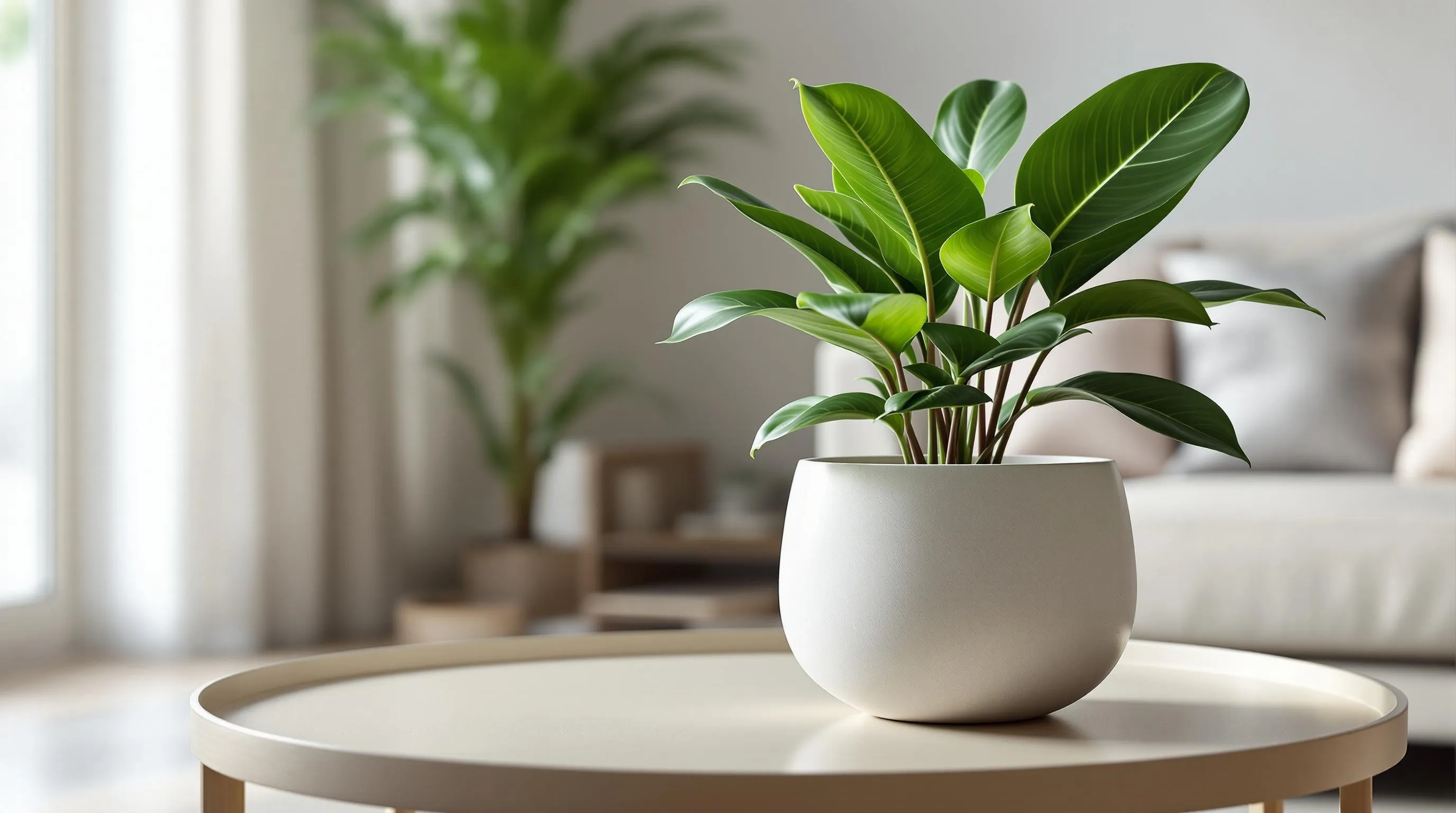
The ZZ Plant (Zamioculcas zamiifolia) has earned its reputation as one of the most resilient houseplants available, making it perfect for plant owners of all experience levels.
Thriving in Neglect: ZZ Plant Care Guide
ZZ Plants truly shine in low light conditions where other plants would struggle to survive. Their glossy, dark green leaves continue to look vibrant even when placed in corners with minimal natural light. Watering requirements are remarkably minimal—allow the soil to dry completely between waterings, which might mean watering only once every 2-3 weeks. These plants have evolved specialized rhizomes that store water, enabling them to withstand long periods without moisture. Fertilization is rarely needed, with a diluted houseplant fertilizer applied just 2-3 times per year being more than sufficient for healthy growth. ZZ Plants can tolerate a wide range of indoor temperatures and humidity levels, further cementing their status as virtually indestructible greenery for busy people.
Decorative Appeal in Modern Homes
ZZ Plants offer a sleek, architectural presence that complements contemporary interior design styles. Their uniformly shaped, glossy leaves create a structured appearance that works well in minimalist spaces. Placing a ZZ Plant in a stylish ceramic pot instantly elevates any room’s aesthetic without demanding elaborate care routines. These plants maintain their attractive appearance year-round, providing consistent visual interest without seasonal fluctuations in appearance. Many designers recommend ZZ Plants for office environments and spaces where maintenance must be kept to a minimum but aesthetic standards remain high. Their compact growth habit makes them suitable for coffee tables, shelves, and other surfaces where space might be limited but greenery is desired.
Rubber Plants: Statement Pieces with Minimal Fuss
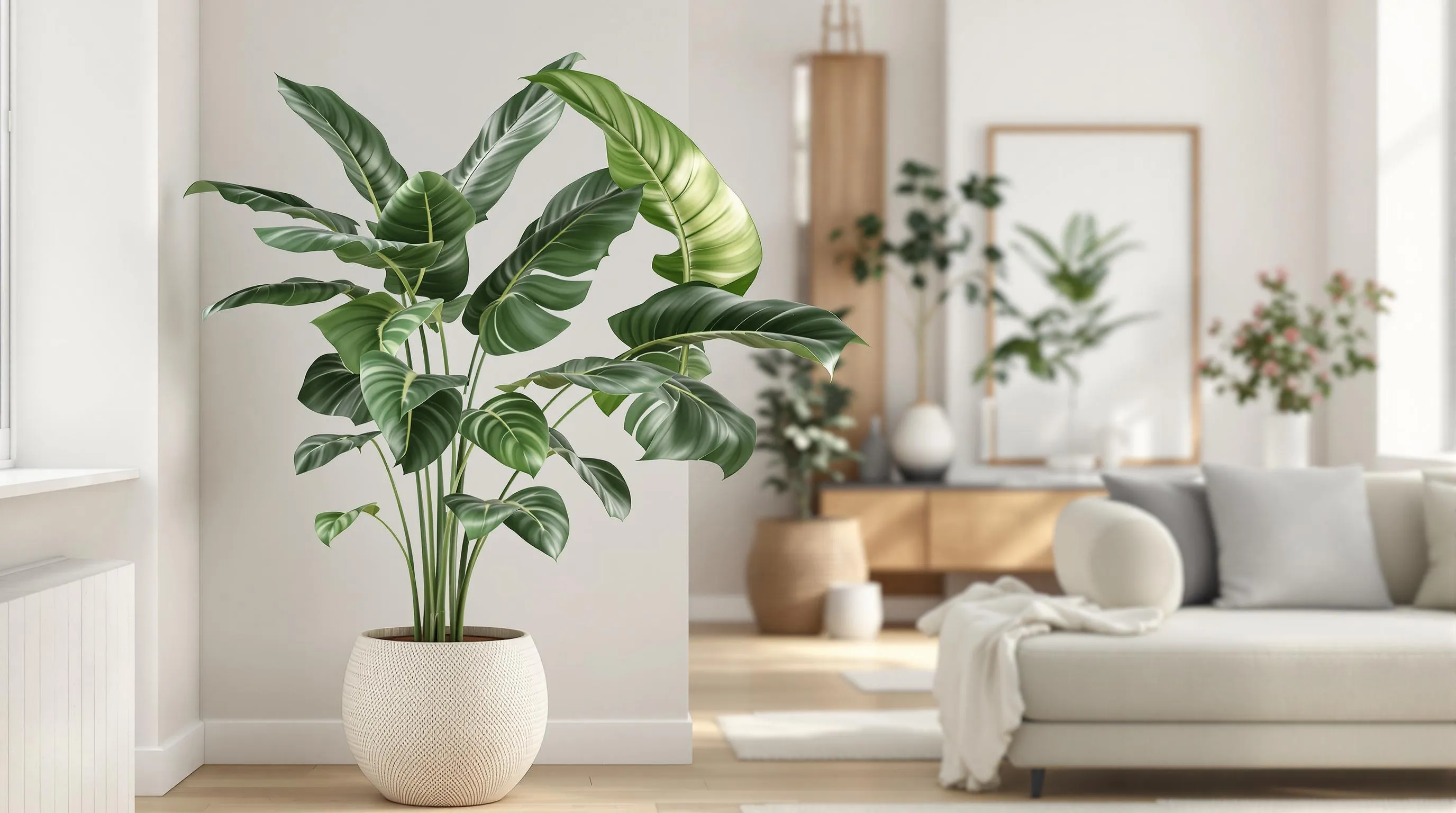
Rubber plants (Ficus elastica) serve as impressive statement pieces in any home with their large, glossy leaves while requiring surprisingly little maintenance. These natural air filters can grow up to 8 feet tall indoors and effectively target formaldehyde from the air, making them both beautiful and functional additions to your living space.
Growing and Pruning Your Rubber Plant
Rubber plants adapt exceptionally well to indoor environments, thriving in bright, indirect light but tolerating moderate light conditions too. They prefer consistent moisture with soil allowed to dry slightly between waterings, preventing the common issue of root rot. During growing seasons (spring and summer), we recommend feeding your rubber plant monthly with a balanced liquid fertilizer to support healthy growth and maintain those signature glossy leaves.
Pruning plays a crucial role in keeping your rubber plant looking its best while controlling its height. Simply cut stems just above a leaf node using clean, sharp scissors whenever the plant becomes too tall or leggy. Save those cuttings to propagate new plants by placing them in water until roots develop, then transferring to soil. When repotting becomes necessary (typically every 1-2 years), choose a container just 1-2 inches larger than the current one to prevent overwatering issues.
Decorating with Large Leafy Plants
Rubber plants serve as perfect focal points in spacious rooms due to their impressive vertical growth and bold leaf structure. Position them in corners or beside furniture pieces where their dramatic silhouette can create visual interest without overwhelming the space. Their large, dark green leaves provide excellent contrast against light-colored walls or neutral furniture, instantly adding depth to any room design.
For maximum impact, place your rubber plant in a decorative pot that complements your existing décor – ceramic, woven baskets, or metallic containers all pair beautifully with these statement plants. Combining rubber plants with smaller houseplants creates an appealing layered effect, particularly when grouping plants of varying heights and textures. Their architectural presence works exceptionally well in minimalist spaces where their clean lines and rich color can truly stand out without competing with too many other design elements.
Succulents: Diverse and Drought-Resistant Options
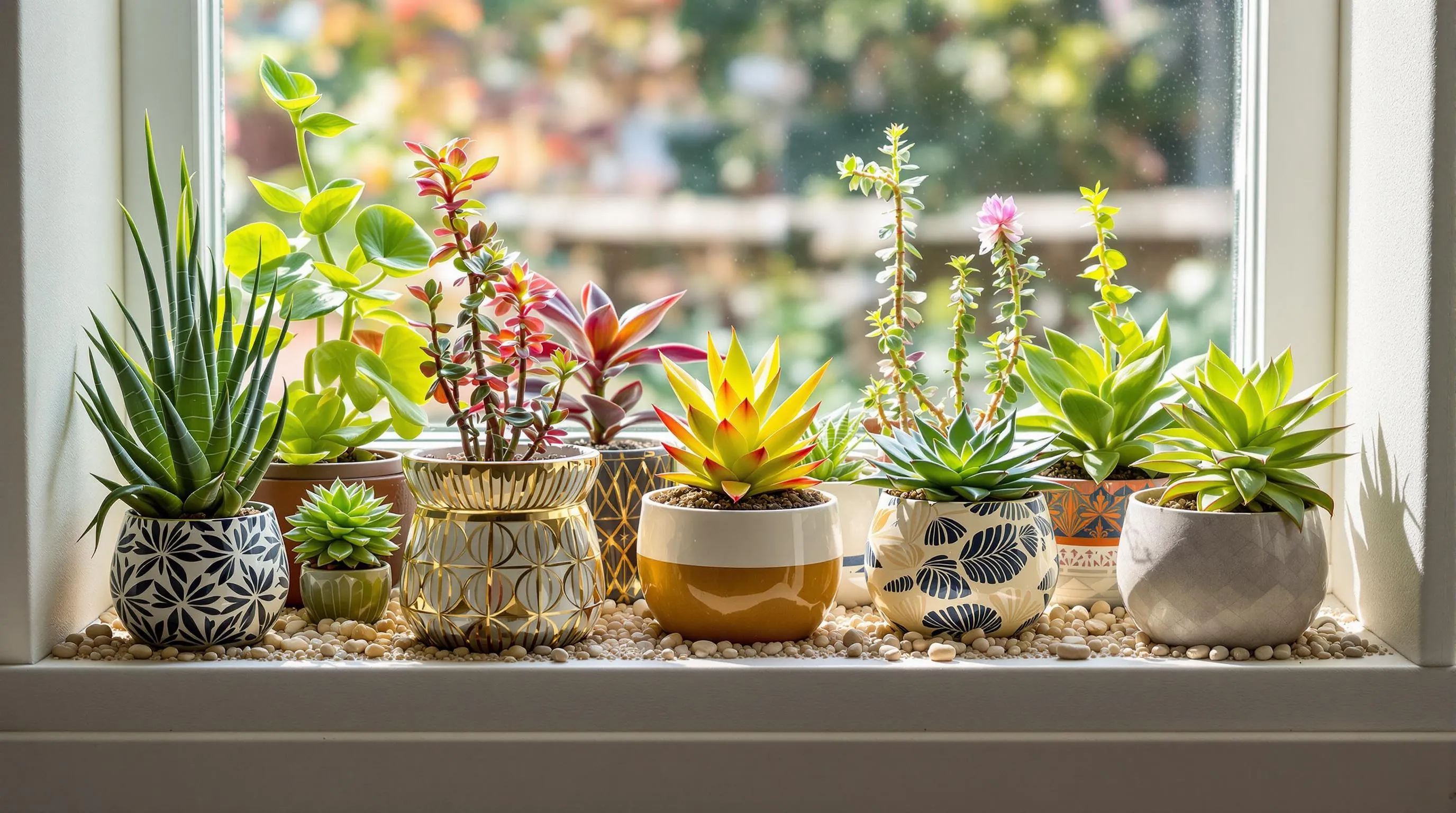
Succulents have earned their place as one of the most popular houseplant choices due to their striking variety and minimal care requirements. These water-storing plants come in countless shapes, sizes, and colors, making them perfect for creating visually interesting displays while being forgiving for novice plant parents or busy households.
Creating an Indoor Succulent Garden
Creating a thriving succulent garden indoors requires thoughtful selection and arrangement for maximum visual impact. We recommend choosing succulents with contrasting textures and heights such as rosette-forming Echeverias alongside trailing Burro’s Tail for dimensional interest. Grouping diverse varieties together creates a miniature industry that serves as a living art piece for your home. Containers with drainage holes are essential for preventing root rot, while shallow, wide pots accommodate the typically shallow root systems of most succulents. Decorative elements like small pebbles or colored sand can enhance the aesthetic appeal while providing functional benefits by improving drainage and reducing soil splashing during watering sessions.
Light and Soil Requirements for Healthy Succulents
Most succulents require direct sunlight for at least 4-6 hours daily to maintain their compact growth and vibrant coloration. South or east-facing windows typically provide ideal lighting conditions for these sun-loving plants. Soil composition plays a crucial role in succulent health, with specialized cactus and succulent mixes offering the perfect balance of drainage and nutrition. The ideal potting medium contains a important portion of coarse materials like perlite, pumice, or coarse sand to ensure water flows through rather than remaining around delicate roots. Watering practices should follow the “soak and dry” method, allowing the soil to completely dry out between thorough waterings. Temperature consistency benefits succulents, with most varieties preferring stable indoor temperatures between 60-80°F, though they can typically tolerate brief periods outside this range.
Monstera Deliciosa: Tropical Vibes for Your Living Space
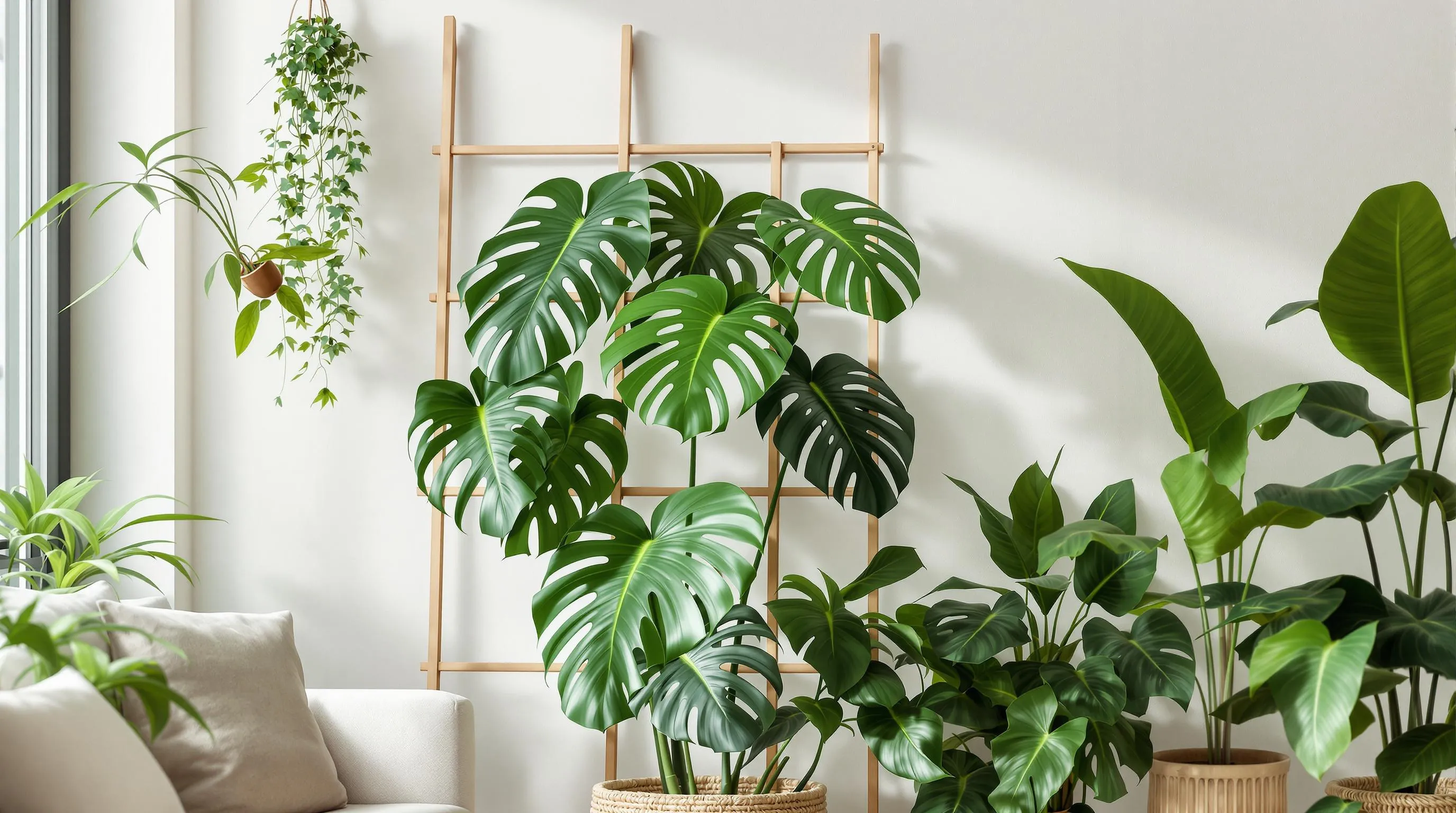
Monstera Deliciosa adds an instant tropical feel to any indoor space while thriving in humid environments with proper support. These statement plants, with their iconic split leaves, have become increasingly popular in modern home décor for their dramatic appearance and relatively straightforward care requirements.
Training and Supporting Your Growing Monstera
Proper support is essential for helping your Monstera Deliciosa reach its full potential. Trellises or moss poles provide the ideal structure for these natural climbers to attach their aerial roots and grow upward instead of outward. Installing a support system early encourages your plant to develop a more upright, space-efficient growth habit that showcases its beautiful fenestrated leaves. Moss poles work particularly well because they mimic the plant’s natural habitat, allowing aerial roots to attach and draw moisture. Regularly guiding new growth toward the support will train your Monstera to climb vertically, creating a stunning focal point in your living space. Checking that supports remain stable as your plant gets larger ensures continued healthy growth and prevents potential damage to your prized tropical beauty.
Humidity and Temperature Considerations
Monstera Deliciosa thrives best in conditions that mirror its tropical origins, preferring humidity levels between 50-80%. Maintaining temperatures between 65-75°F provides the optimal environment for healthy growth and vibrant foliage. Misting your Monstera’s leaves regularly or placing a humidifier nearby can significantly boost humidity levels, especially during dry winter months when indoor heating systems reduce ambient moisture. Grouping your Monstera with other tropical plants naturally increases humidity through transpiration, creating a microclimate that benefits all your humidity-loving plants. Avoiding cold drafts and sudden temperature fluctuations prevents stress on your plant, as Monsteras are sensitive to extreme changes in their environment. Monitoring these conditions ensures your Monstera remains healthy, with those characteristic splits developing properly in mature leaves for that authentic tropical aesthetic.
Chinese Money Plant: Trendy and Easy to Propagate
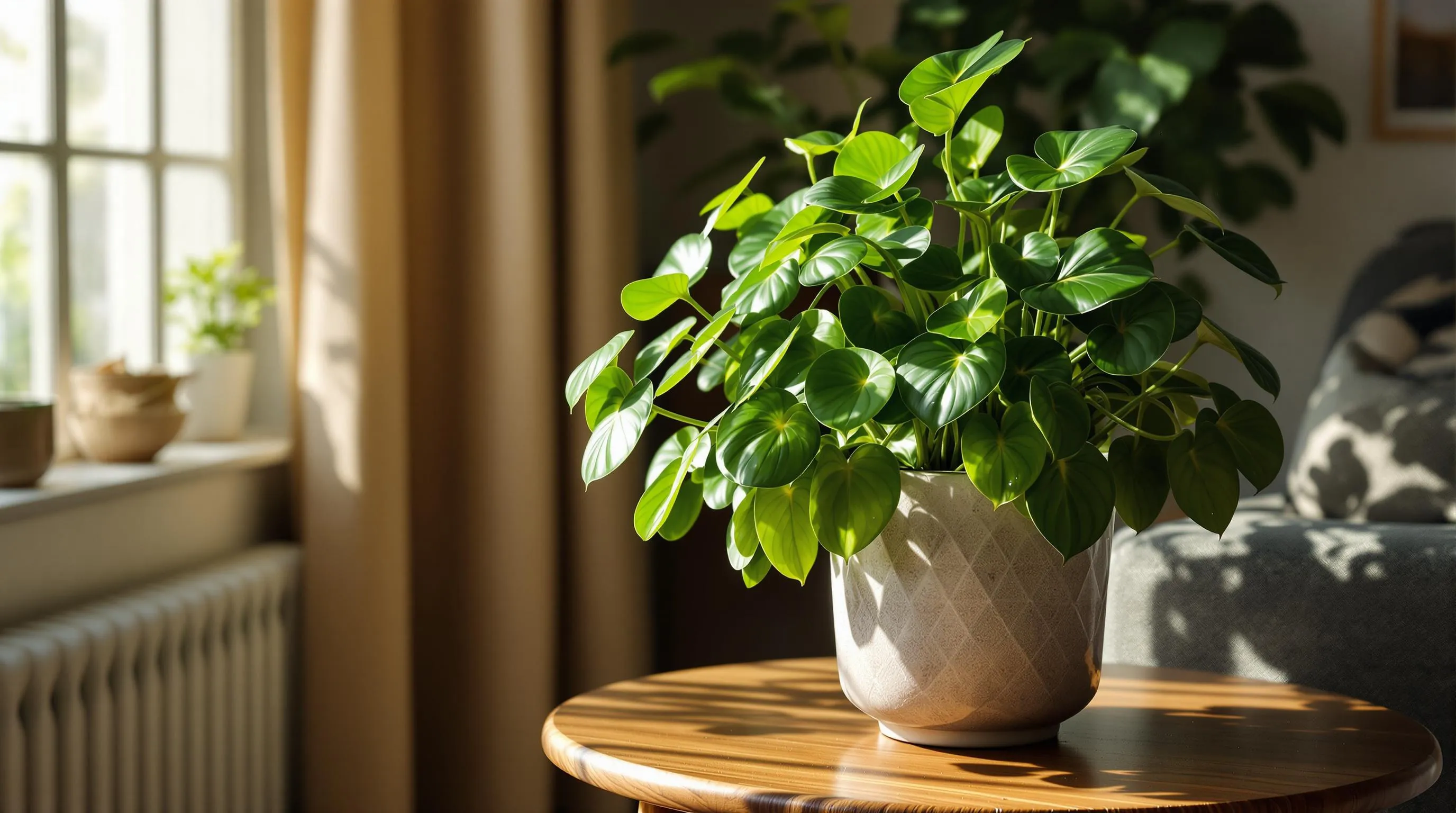
The Chinese Money Plant (Pilea peperomioides) has become a must-have statement piece in modern homes thanks to its distinctive round, coin-shaped leaves. This charming plant not only brings a unique aesthetic to your space but also offers incredibly easy propagation, making it perfect for expanding your plant collection or sharing with friends.
Sharing the Wealth: Propagation Techniques
Propagating Chinese Money Plants is remarkably straightforward, making them perfect for beginners looking to multiply their plant collection. The plant naturally produces offsets or “pups” around its base, which can be separated from the mother plant with minimal effort. Simply remove these baby plants by gently digging around their base to expose the roots, then carefully separate them from the parent. Plant each pup in a small pot with moist, well-draining soil, ensuring they have bright, indirect light to establish themselves. Within a few weeks, these new plants will begin to thrive independently. Many plant enthusiasts love Chinese Money Plants specifically because they can create an entire collection from just one original plant, making them both economical and rewarding to grow.
Placement Tips for Optimal Growth
Finding the perfect spot for your Chinese Money Plant significantly impacts its health and appearance. These plants thrive best when positioned near east or west-facing windows where they receive bright, indirect sunlight throughout the day. Direct midday sun should be avoided as it can scorch their delicate leaves, causing unsightly brown spots. Rotate your plant periodically (about once a week) to ensure even growth, as Pileas tend to lean toward light sources, resulting in lopsided growth without regular turning. The soil should be allowed to dry out between watering sessions to prevent root rot, which makes them ideal for busy households. Their adaptability to normal room temperatures makes Chinese Money Plants excellent additions to almost any room in your home, though they particularly shine as desktop companions or on side tables where their unique circular leaves can be admired up close.
How to Incorporate These Plants into Your Home Décor
Bringing these living treasures into your home can transform both your space and wellbeing. From the air-purifying Snake Plant for your bedroom to the elegant Peace Lily brightening dim corners each plant offers unique benefits while requiring minimal effort.
Don’t hesitate to mix and match varieties based on your lifestyle and aesthetic preferences. Start with just one or two easy-care options and gradually expand your indoor garden as your confidence grows.
Remember that indoor plants aren’t just decorations – they’re living companions that improve air quality reduce stress and connect us with nature. Whether you’re drawn to the dramatic Monstera the practical Aloe Vera or the trendy Pilea there’s a perfect plant waiting to enhance your home and life.
Frequently Asked Questions
What are the best low-maintenance indoor plants for beginners?
The best low-maintenance indoor plants for beginners include Snake Plant, ZZ Plant, Pothos, Spider Plant, and Chinese Evergreen. These plants can thrive with minimal care, tolerate irregular watering, and adapt to various light conditions. They’re perfect for busy individuals or those new to plant parenthood as they forgive occasional neglect while still providing air-purifying benefits and aesthetic appeal to your home.
How often should I water my indoor plants?
Watering frequency varies by plant type. Most indoor plants prefer to dry out slightly between waterings. Snake Plants and ZZ Plants need water only when completely dry (every 2-3 weeks). Pothos and Spider Plants require water when the top inch of soil feels dry. Peace Lilies need more consistent moisture. Always check the soil before watering rather than following a strict schedule to prevent overwatering.
Do indoor plants really improve air quality?
Yes, indoor plants do improve air quality. NASA research confirms that many houseplants effectively filter common indoor pollutants like formaldehyde, benzene, and trichloroethylene. Snake Plants and Peace Lilies are particularly effective air purifiers. Additionally, Snake Plants uniquely produce oxygen at night, making them ideal for bedrooms. While a single plant offers benefits, multiple plants throughout your home maximize air purification effects.
Which indoor plants are safe for homes with pets?
Spider Plants, Boston Ferns, Areca Palms, Money Trees, and Cast Iron Plants are pet-safe options. Always avoid toxic varieties like Peace Lilies, Pothos, and Aloe Vera if you have curious pets. Spider Plants are particularly recommended for pet owners as they’re completely non-toxic and offer air-purifying benefits. Before bringing any plant home, verify its safety through the ASPCA’s toxic plant database.
How much light do indoor plants need?
Light requirements vary by plant species. ZZ Plants, Snake Plants, and Pothos tolerate low light conditions. Peace Lilies prefer bright indirect light but adapt to dimmer settings. Succulents and Aloe Vera need bright, direct sunlight. Most indoor plants thrive in bright indirect light, which means near a window but not in direct sun rays. Monitor leaf color—yellowing often indicates too much light, while stretching stems suggest insufficient light.
How do I propagate Spider Plants and Pothos?
Spider Plants produce “spiderettes” (baby plants) that can be rooted in water or directly in soil while still attached to the mother plant. Once roots develop (2-3 weeks in water), cut the connection and pot separately. For Pothos, cut a stem below a node (the bumpy part), place in water until roots grow (2-4 weeks), then transfer to soil. Both plants propagate easily, making them perfect for expanding your collection without additional purchases.
What are the benefits of having Aloe Vera as a houseplant?
Aloe Vera functions as a living medicine cabinet with gel that soothes burns, cuts, and skin irritations. It’s also an effective air purifier, removing formaldehyde from indoor environments. As a succulent, it requires minimal care—bright sunlight and infrequent watering make it perfect for busy households. Keeping an Aloe Vera in your kitchen provides easy access to its healing properties while adding decorative value to your space.
How can I create an attractive display with my indoor plants?
Create visual interest by combining plants of different heights, textures, and leaf shapes. Use varying pot styles and materials that complement your décor. Try hanging planters for trailing plants like Pothos, wall-mounted options for vertical interest, or groupings on shelves for a curated look. For larger plants like Rubber Plants, use decorative pots as statement pieces. Group humidity-loving plants together to create beneficial microclimates while enhancing visual appeal.
How do I care for succulents indoors?
Succulents need bright, direct sunlight for at least 6 hours daily—place them near south or west-facing windows. Use well-draining cactus soil and pots with drainage holes. Water thoroughly using the “soak and dry” method, allowing soil to completely dry between waterings (typically every 2-3 weeks). Maintain temperatures between 60-80°F and avoid cold drafts. Fertilize sparingly during growing season with cactus-specific fertilizer at half-strength.
What should I do if my indoor plant’s leaves are turning yellow?
Yellowing leaves typically indicate overwatering, though other causes include insufficient light, nutrient deficiencies, or pests. First, check soil moisture—if soggy, allow it to dry and adjust your watering schedule. Ensure your plant receives appropriate light for its species. Examine for pests under leaves and treat if necessary. If yellowing continues, consider repotting with fresh soil or adding diluted fertilizer. Remove yellow leaves to encourage new growth and prevent disease spread.

